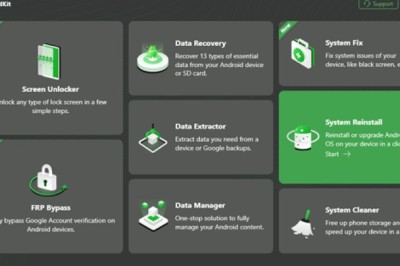views

Banking institutions play a critical role in the global economy by facilitating financial transactions, providing loans, and safeguarding customers' funds. However, the banking industry is not without its fair share of risks. These risks can pose significant challenges to the stability and profitability of banks, as well as the overall financial system. So, here are some of the most common types of risks in banking. From credit and market risks to operational and regulatory risks, understanding these risks is essential for banks to effectively manage their operations, protect their customers, and maintain the trust and confidence of stakeholders.

Credit risk
One of the biggest hazards that banks face is credit risk. It results from the potential for counterparties or borrowers to break their financial commitments, thus causing losses for the bank. Banks determine credit risk by determining a borrower's creditworthiness, examining their financial situation, and setting reasonable loan limits. Implementing strict underwriting guidelines, performing extensive due research, and keeping diversified loan portfolios are all part of reducing credit risk.
Market risk
Market risk refers to the potential losses banks face due to fluctuations in market conditions, such as interest rates, exchange rates, and asset prices. Banks with significant market exposures are vulnerable to market risk, as adverse movements in these variables can impact the value of their assets and liabilities. To manage market risk, banks employ various risk management techniques, including hedging strategies, stress testing, and monitoring market trends and developments.

Liquidity risk
Liquidity risk arises when a bank is unable to meet its financial obligations as they come due. It can occur due to a mismatch between a bank's assets and liabilities or during periods of market stress when accessing funding becomes challenging. Effective liquidity risk management involves maintaining adequate liquidity buffers, diversifying funding sources, and implementing contingency plans to address liquidity shortfalls.
Operational risk
Risks resulting from internal processes, systems, and human factors are all included in operational risk. This includes hazards related to fraud, lapses in technology, legal and compliance problems, and disruptions in corporate operations. Operational risk can lead to monetary losses, harm to one's reputation, and legal repercussions. To reduce operational risk and guarantee that their operations run smoothly, banks implement strong risk management frameworks, internal controls, and employee training programs. This is why you might look for some help and find people who know more about operational risk than you. For instance, the knowledgeable Samer Muasher might be just the person you need to look into because he’s been helping banks identify and mitigate risks all over the world.

Compliance and regulatory risk
Compliance and regulatory risk stem from the evolving regulatory environment in which banks operate. Banks must comply with a myriad of laws, regulations, and reporting requirements to maintain their license to operate and meet their obligations as financial intermediaries. Failure to comply with regulatory requirements can result in financial penalties, reputational damage, and legal consequences. Banks invest significant resources in staying abreast of regulatory changes, implementing robust compliance programs, and conducting regular internal audits to manage compliance and regulatory risks.
Reputational risk
Reputational risk is the potential harm to a bank's reputation due to negative public perception, customer dissatisfaction, or unethical practices. Banks rely on their reputation and trustworthiness to attract customers, investors, and business partners. Reputational damage can lead to customer attrition, loss of business opportunities, and difficulty accessing funding. Banks manage reputational risk by maintaining high ethical standards, providing excellent customer service, and proactively addressing any issues that may harm their reputation.

Cybersecurity risk
Banks are now very concerned about cybersecurity risk in the current digital era. Banks are at risk of data breaches, cyberattacks, and illegal access to sensitive consumer information as a result of their growing reliance on technology and networked systems. To defend against cyber threats and guarantee the protection of client data, banks invest in strong cybersecurity solutions, including firewalls, encryption, multi-factor authentication, and employee training.

Country and geopolitical risk
Country and geopolitical risks arise from political, economic, and social factors in the countries where banks operate or have exposure. These risks can include changes in government policies, economic instability, social unrest, and geopolitical tensions. Banks with international operations or exposures to emerging markets are particularly vulnerable to country and geopolitical risks. To manage these risks, banks conduct thorough country risk assessments, diversify their geographic exposures, and closely monitor political and economic developments.
Managing risks is an integral part of the banking industry. By understanding and effectively managing credit, market, liquidity, operational, compliance, reputational, cybersecurity, and country and geopolitical risks, banks can safeguard their financial stability, protect their customers' interests, and maintain the trust of stakeholders. Implementing robust risk management frameworks, conducting regular risk assessments, and staying abreast of emerging risks are essential components of a proactive risk management strategy in the dynamic and complex banking landscape.





















Comments
0 comment